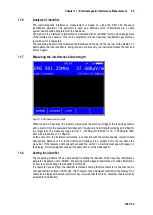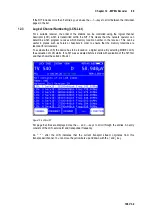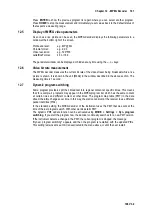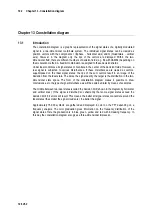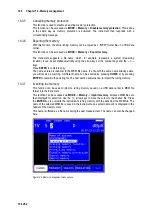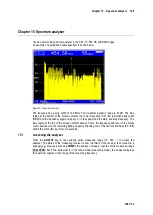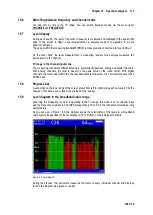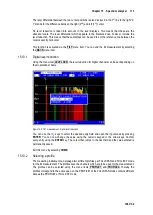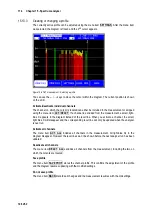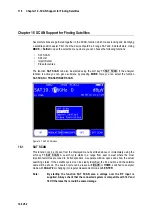
Chapter 14 - Memory management 107
106 V3.2
14.3
Memory functions
The memory functions can only be controlled when the measuring receiver has not been tuned.
Erasing all memory
14.3.1
Press
MODE
->
Memory
->
Erasing all memory
to delete the entire tuning memory. A warning is
issued beforehand. Press
ENTER
again to confirm that the instrument is to erase its tuning
memory. This may take a few seconds. The instrument will issue a message indicating that the
process is complete.
Erasing a memory location
14.3.2
You can erase a consecutive group or a single memory location within the tuning memory using
this function. You can access this function by pressing
MODE
->
Memory
->
Erasing memory
location
. You will initially be asked which location should be erased first. Confirm with
ENTER
; you
will then be asked which location should be erased last. If the first and last memory locations are
identical, only one memory location will be erased. Here, the instrument will also issue a warning.
Press
ENTER
to acknowledge the warning and continue. The instrument will then issue a message
indicating that the process is complete.
Sorting memory
14.3.3
You can use this function to scan the entire tuning memory according to different criteria.
According to A/D mode:
The memory is sorted according to analogue and digital memory locations.
This can be accessed via
MODE
>
Memory
>
Sorting memory
>
according A/D-mode
.
According to frequency:
The memory is sorted here according to ascending frequency.
You can access this function by pressing
MODE
->
Memory
->
Sorting memory
->
according
frequency
.
According by range:
Here the memory is sorted according to TV (beginning), FM, RC and EMI range.
You can access this function by pressing
MODE
->
Memory
->
Sort memory
->
according range
.
It may take a few seconds to sort the memory. The instrument is blocked for this time and will issue
a message indicating that the process is complete.
Memory protection
14.3.4
This function can be used to apply memory protection to the entire tuning memory, subgroups or
individual memory locations. This prevents the user from accidentally overwriting a memory
location.
This function can be accessed via
MODE
->
Memory
->
Protecting memory
. As in the chapter
14.3.2 - Erasing a memory location, the instrument will ask for the first and last memory location to
which memory protection is to be applied. Press
ENTER
to confirm. The instrument will then issue
a corresponding message. The next section explains how to disable memory protection.
Memory protection is enabled for memory locations marked with ’*’.



